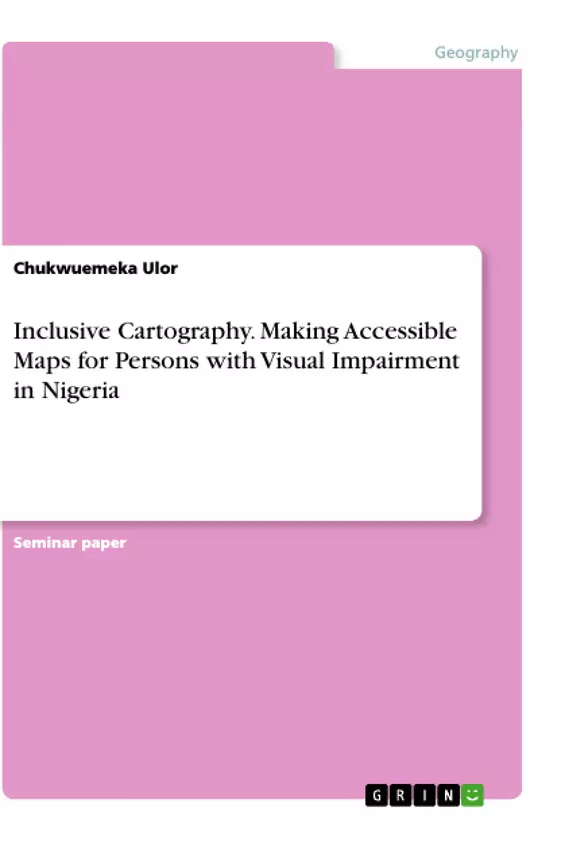Many of our maps and mapping processes do not consider nor involve persons with disabilities. People with visual impairment, hard of hearing and mobility challenges also need these tools to live a normal life. In cartography, accessibility can be improved by making tactile maps and inclusive digital maps which are significantly helpful for persons with disabilities.
Accessibility is the word used to describe whether a place, service or product can be used by people of all abilities and disabilities. For example, a train or website is accessible if all people, including non-disabled, disabled and elderly people can use it. People with disabilities (PwDs) face challenges in moving around seamlessly due to barriers created by the society. Accessibility translates to the removal of barriers in accessing places, products and services. Persons with disabilities also experience challenges in accessing education, healthcare, employment, finance and basic needs of life. Accessibility gives everyone (able and disabled) the same opportunity. Common area barriers include mobility, auditory, neurological, cognitive, medical, and psychological. According to the United Nations over one billion people live with disabilities. The reality is that more people will have some form of disability in the future either temporarily or permanently. Increase in forms of disability can be attributed to old age, ill health, mental disorders, physical deformity, accident and armed conflict. Since we know disability is on the rise, it is important that accessibility takes precedence across the world, as soon as possible. Research has shown that people with disabilities don’t consider themselves as being unhealthy; therefore, making map products and cartographic services accessible goes a long way to enable PwDs move around with minimal assistance.
Inhaltsverzeichnis (Table of Contents)
- Introduction
- Materials and Method
- Discussion
Zielsetzung und Themenschwerpunkte (Objectives and Key Themes)
This paper explores the importance of inclusive cartography in making maps accessible for individuals with visual impairments in Nigeria. It aims to identify and propose solutions for improving the current accessibility of maps and mapping processes for PwDs, focusing particularly on the needs of visually impaired individuals.
- Accessibility in cartography for PwDs
- Challenges faced by PwDs in accessing cartographic resources
- The use of tactile maps as an inclusive cartographic tool
- The importance of inclusive design principles in digital mapping
- Recommendations for creating accessible maps in Nigeria
Zusammenfassung der Kapitel (Chapter Summaries)
- Introduction: This chapter provides an overview of accessibility in cartography and the challenges faced by individuals with disabilities in accessing maps and mapping services. It highlights the significance of creating inclusive maps, particularly in the context of Nigeria, where a large population has disabilities.
- Materials and Method: This chapter explores the use of tactile maps as a primary tool for making maps accessible to visually impaired individuals. It discusses the unique characteristics and challenges of tactile map design and development. The chapter also explores the role of digital maps in inclusive cartography and emphasizes the need for accessibility features in digital mapping platforms.
- Discussion: This chapter delves into the diverse applications of maps and how they can be designed and developed to enhance accessibility for individuals with disabilities. It highlights the potential for interactive maps to provide information on accessibility features in the built environment and suggests recommendations for promoting inclusivity in map design and production.
Schlüsselwörter (Keywords)
The primary keywords and focus topics of the text include accessibility, accessible maps, tactile maps, inclusive cartography, disability geography, and accessibility standards in mapping. The paper emphasizes the need for incorporating accessibility considerations into map design and development to ensure that cartographic resources are usable and meaningful for people with disabilities.
- Quote paper
- Chukwuemeka Ulor (Author), Inclusive Cartography. Making Accessible Maps for Persons with Visual Impairment in Nigeria, Munich, GRIN Verlag, https://www.grin.com/document/1235000



